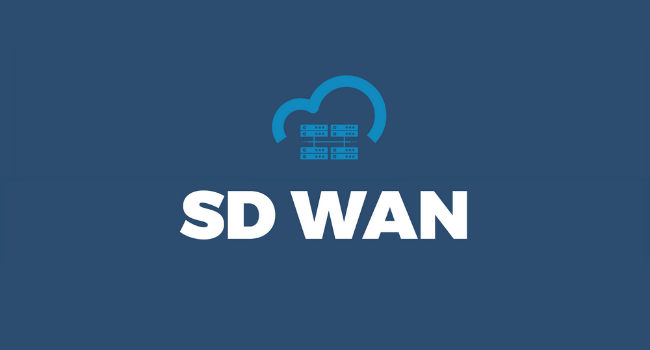
Anyone who considers IT a crucial part of their business may well have heard about Software Defined Networking as part of a Wide Area Network, also known as SD WAN. However, there’s an awful lot of misleading information about SD WAN on the internet.
To shine a light on the subject, here’s a simple explanation of what SD WAN really is, and what it can and cannot do for your business.
SD WAN – What actually is it?
SD WAN becomes a lot easier to understand if you are familiar with what a WAN is – a wide area network. A WAN is a network consisting of multiple devices, all of which are linked over a large physical area. The internet itself is pretty much a WAN.
For a business network, a WAN generally consists of a hub in the centre – which contains key elements of infrastructure such as servers – with multiple branches, such as cloud services and offices.
A WAN is created when a branch’s local area network (LAN) is connected to the internet, and then the other LANs. Once the WAN is set up, each location can share the hub’s resources, meaning they can all utilize the same systems, storage, and software. Very useful!
SD WAN – True or false?
Nothing within your WAN is removed or replaced when you start using SD WAN. SD WAN merely provides a business with software giving them greater control over the network – think of it as an overlay.
Each device on your network will be able to use the software, which grants you control over them that previously was only accessible at each physical location.
This kind of remote access can be a huge benefit for technicians working on the network, as their travel time will be greatly reduced. But what can SD WAN really do for a business? As we previously mentioned, there are a lot of bold claims out there – we’ll take a look at some now, and hopefully clear up some of the confusion.
1. SD WAN works well with SaaS applications
This is true – SD WAN can definitely be advantageous if your business uses or is planning to make use of Software as a Service (SaaS) apps, since you’ll be able to let all your operations have access to the hub’s resources, all with the same priority and speed.
SD WAN lets businesses address any issue that may pop up in relation to your Saas applications without having to send someone to the physical location, which can be incredibly useful.
Even more so if your end-users and customers are relying on real-time applications – you’ll always want them to be performing as well as they possibly can. Of course, this is only really a benefit if you’re using SaaS applications at all – which ones you’re using.
2. SD WAN lets you change priority traffic and bandwidth on the fly
This, unfortunately, may simply be too bold a claim to back up, even though many providers of SD WAN may shout about how revolutionary their systems are.
SD WAN can absolutely improve your services as a business, but a lot of the bigger, more significant changes that you might be looking for, can’t always be made with SD WAN on its own.
You always need to ensure your network is maximising its efficiency. SD WAN can really draw the full potential of your current hardware, pushing it to its limits, but it’s unlikely to make any deeper changes to that hardware.
3. SD WAN lets you quickly set up new sites
That would be incredible wouldn’t it? Being able to remotely set up new hardware, super quick would be a dream come true… Sadly though, SD WAN cannot help you accomplish this dream.
As we mentioned earlier, SD WAN doesn’t remove and replace any hardware, it’s simply an overlay. SD WAN can assist you in setting up new sites, as long as you already have the connections where you need them. If you don’t, not much will change.
4. SD WAN will supersede MPLS
This is another thing that people like to make bold claims about – that SD WAN is a good alternative to MPLS, the expensive system of connections used by businesses which need to have a multitude of apps working across their network.
Multi-Protocol Label Switching (MPLS) is a method of managing data, which lets the route data takes, and its priority, be dynamically altered.
It lets crucial applications stay online, running at maximum efficiency, at the trade off of having less important data having a lower priority. MPLS is a technique favoured by businesses whose networks need very high performance.
SD WAN actually does provide a Class of Service (CoS) system, which allows priority to be assigned to network traffic. But since SD WAN is just an overlay, slight adjustments is all it really offers, whereas MPLS – which is part of the network’s infrastructure – offers much more significant changes.
SD WAN, and other software solutions, will most likely not replace MPLS – but in the future, it may well become common to see businesses rely less on MPLS-like hardware solutions.
SD WAN – Is it right for your business?
To answer this question, you really need to consider what you need from your network. What we’ve mentioned in this article may be very important to some businesses, but for others, there may still be questions left unanswered.
Think of it this way – if you’re currently outsourcing your IT work to a managed service provider, one who can deal with all the IT issues you may have before you even notice there’s a problem, you may not see much of a difference if you decide to implement SD WAN.
But if you rely on an IT team who works in-house, who often have to move from location to location, wasting precious time – SD WAN may be just what they need.
Also Read:
